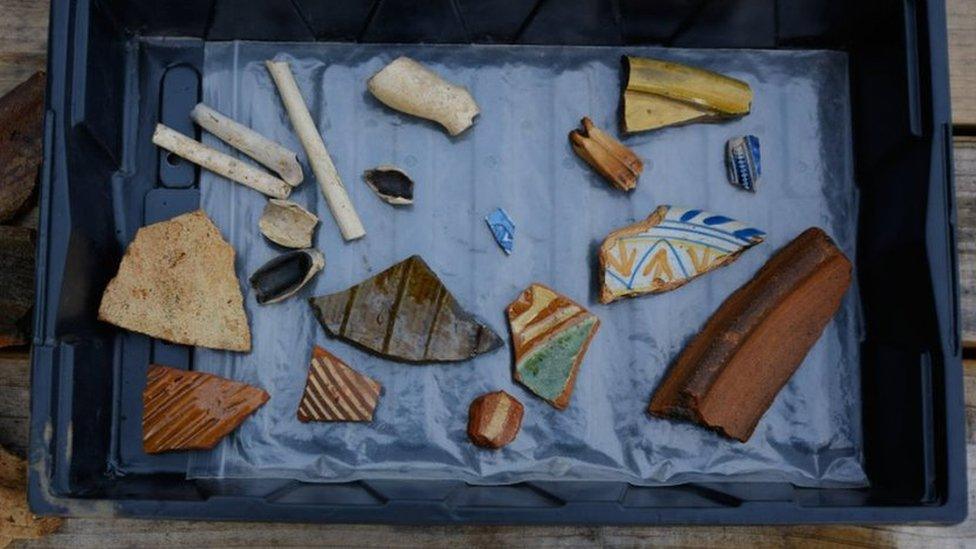Swedish scientists studying Ice Age Jersey beach samples
- Published

Anya Hawkins studies magnetic signatures in loess that might indicate wind direction at the time of deposition
Scientists in Sweden have been studying samples from Jersey to understand more about the Ice Age.
Samples were taken last year from the island's loess and raised beaches to try and increase the scientific data of the time.
The samples have since been studied in specialist laboratories in Denmark and Sweden.
They were collected by Dr Tom Stevens and Yunus Baykal from Sweden's Uppsala University.
MSc student Anya Hawkins has been looking at magnetic signatures in loess that might indicate wind direction at the time of deposition.
"I'm hoping to be able to reconstruct some of the past wind directions on Jersey from the dust deposits so for the past few weeks I've been working in the lab with lots of samples," she said.
Mr Baykal said he had been to the island twice for the research, once for reconnaissance and the second time to collect samples.
"During the last Ice Age, the British-Irish ice sheet has moved quite far south and has situated the southern margin very close to Jersey so we can look at and try to understand a lot of the ice margin processes which I find very interesting," he said.

Follow BBC Guernsey on Twitter, external and Facebook, external. Send your story ideas to channel.islands@bbc.co.uk, external.
- Published3 February 2022

- Published18 January 2022

- Published12 January 2022

- Published9 September 2021